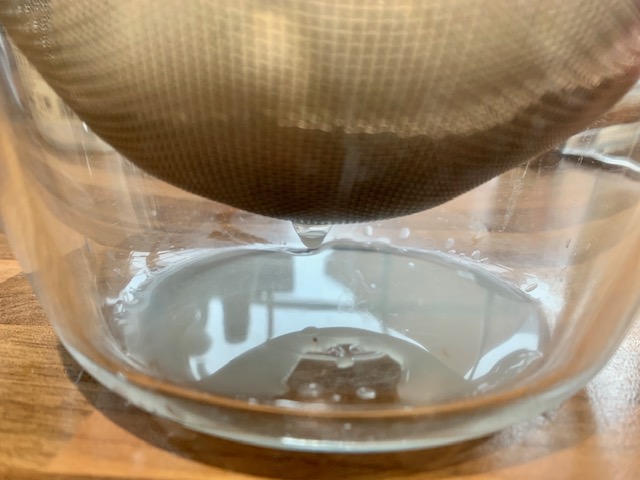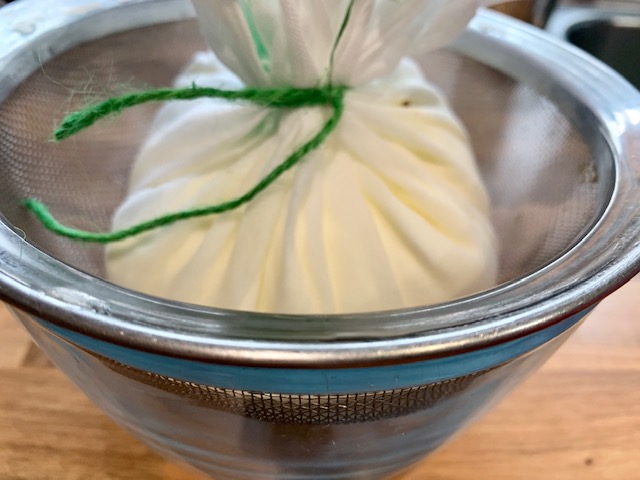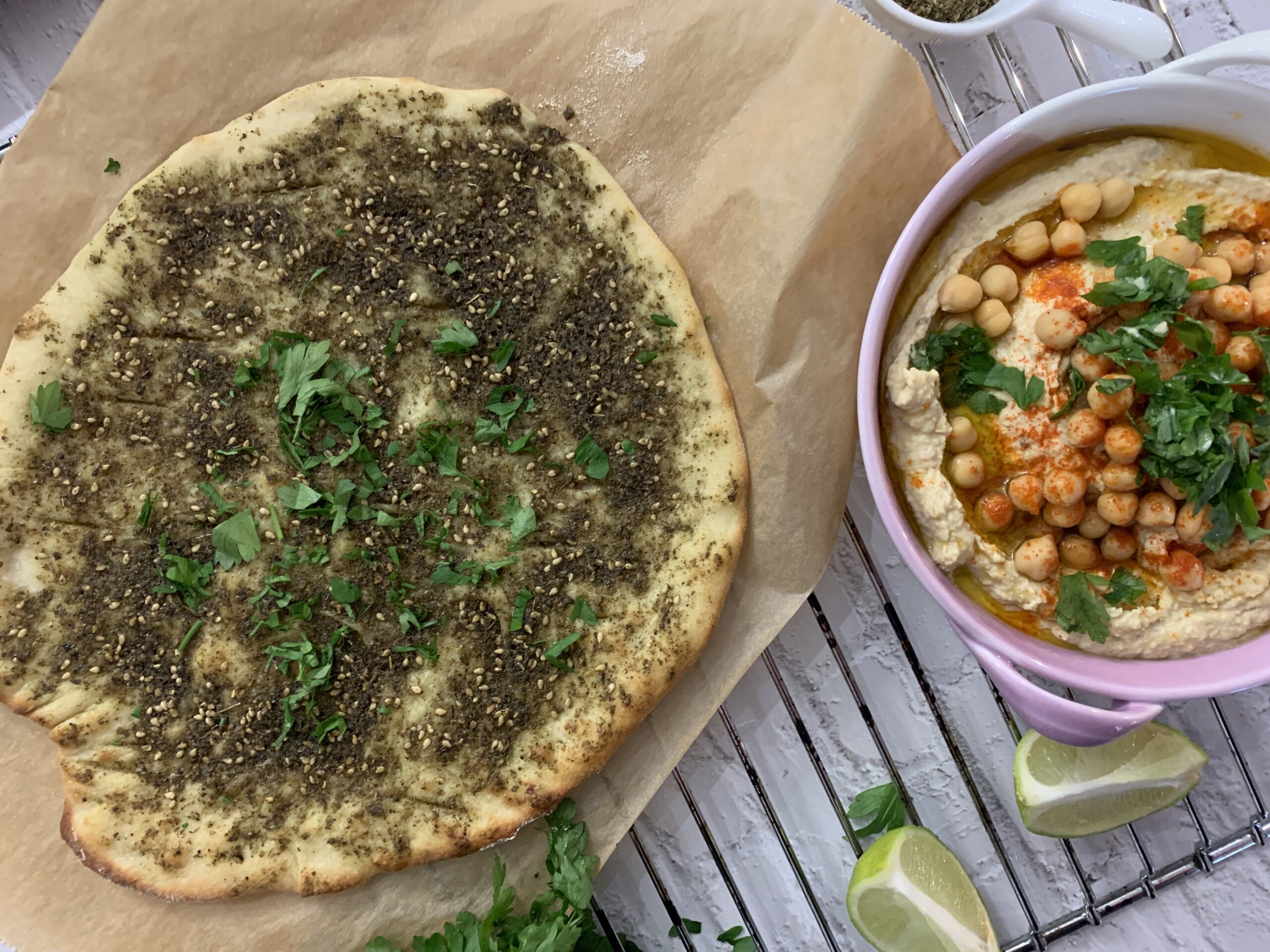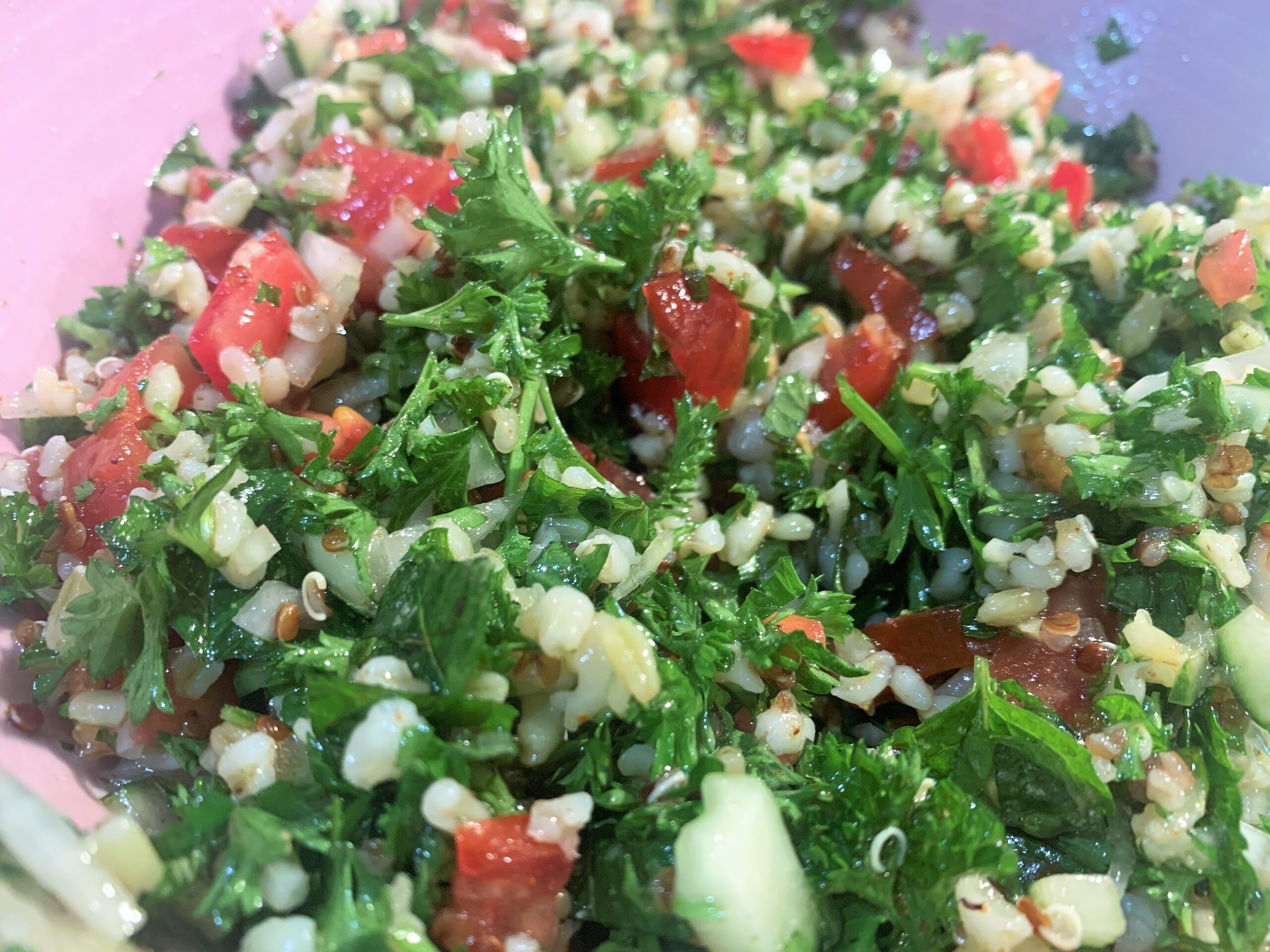Labneh
Labneh also spelled labne, is a Middle Eastern (and particularly Lebanese) strained yogurt. It is a very thick, creamy yogurt meze – often described as a ‘yogurt cheese’ due to its thick consistency of cream cheese. However, in comparison to cream cheese, labneh is sharper and has citrusy notes as it is made with plain natural yogurt.
If you have natural yogurt at home – whether it is homemade yogurt or supermarket yogurt—you can make this delicious Lebanese Meze at home. You can use any type of full-fat yogurt to make labneh—sheep’s milk will be tangier and cow’s milk creamier. The only type of yogurt to avoid is set Greek yogurt, which does not drain properly hence the labneh is not as thick. It is super simple recipe which takes minutes to prepare.
I often make labneh at home to accompany other meze like saksuka, cacik, plain houmous, roasted aubergine houmous, muhammara, batata harra or just serve it as a dip with tomatoes, carrots, cucumber and bread. I also use it like feta in salads or dotted over roast vegetables. To make Labneh you need to hang the yogurt in muslin until it is as thick as cream cheese. It has slightly tangy, salty flavour reminiscent of feta. If you want to keep it for longer than a week, you can make it into balls and cover these with olive oil, which will keep happily in the fridge for a couple of months.
This simple, easy and delicious recipe is definitely worth a try as it so versatile and can be enjoyed in different ways.
Ingredients
450 grams full-fat yogurt
¾ teaspoons salt
1 grated garlic clove
½ teaspoon dried mint
Olive oil to drizzle
Za’atar for serving (optional)
Directions
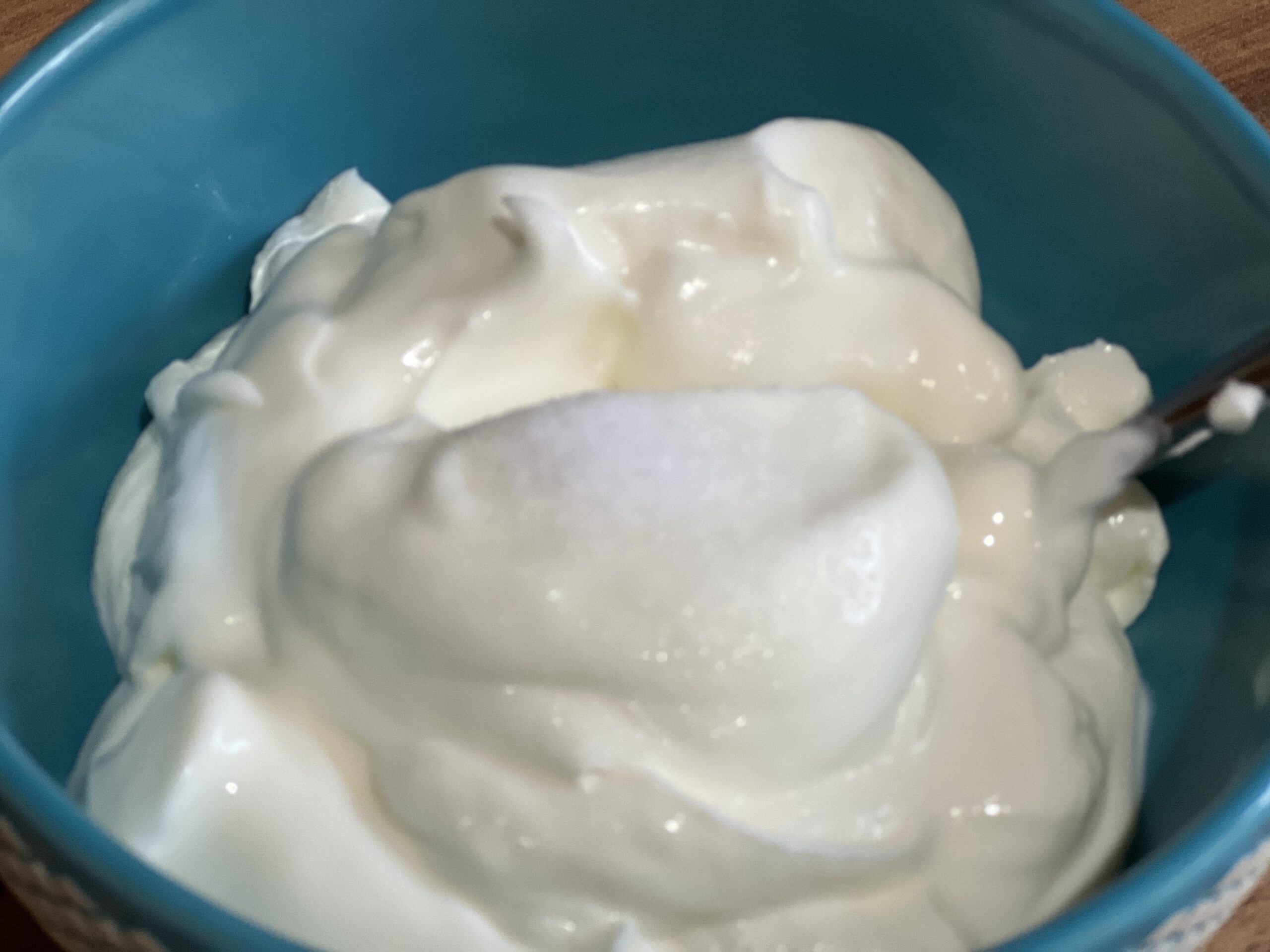
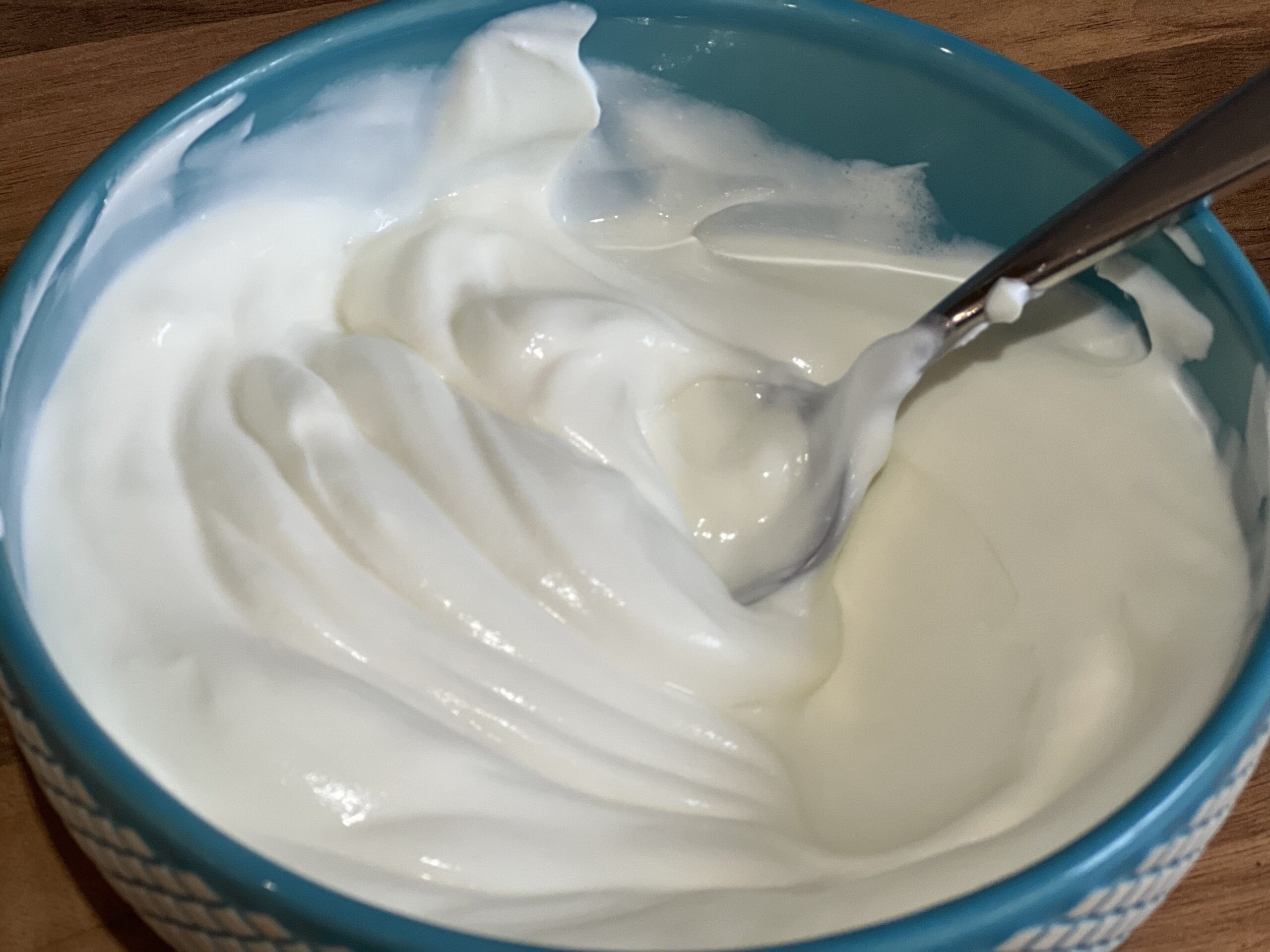

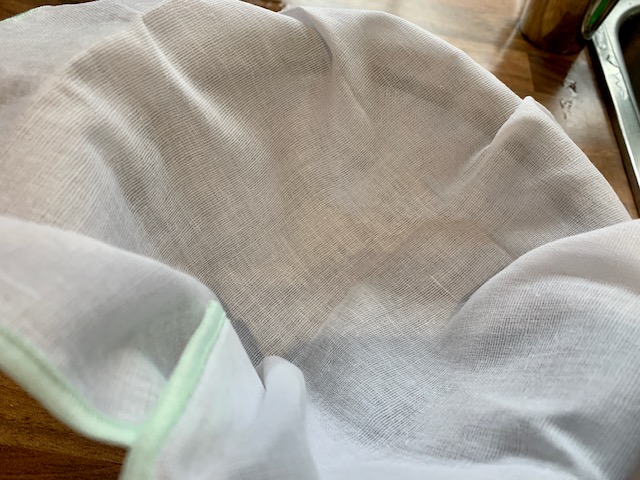
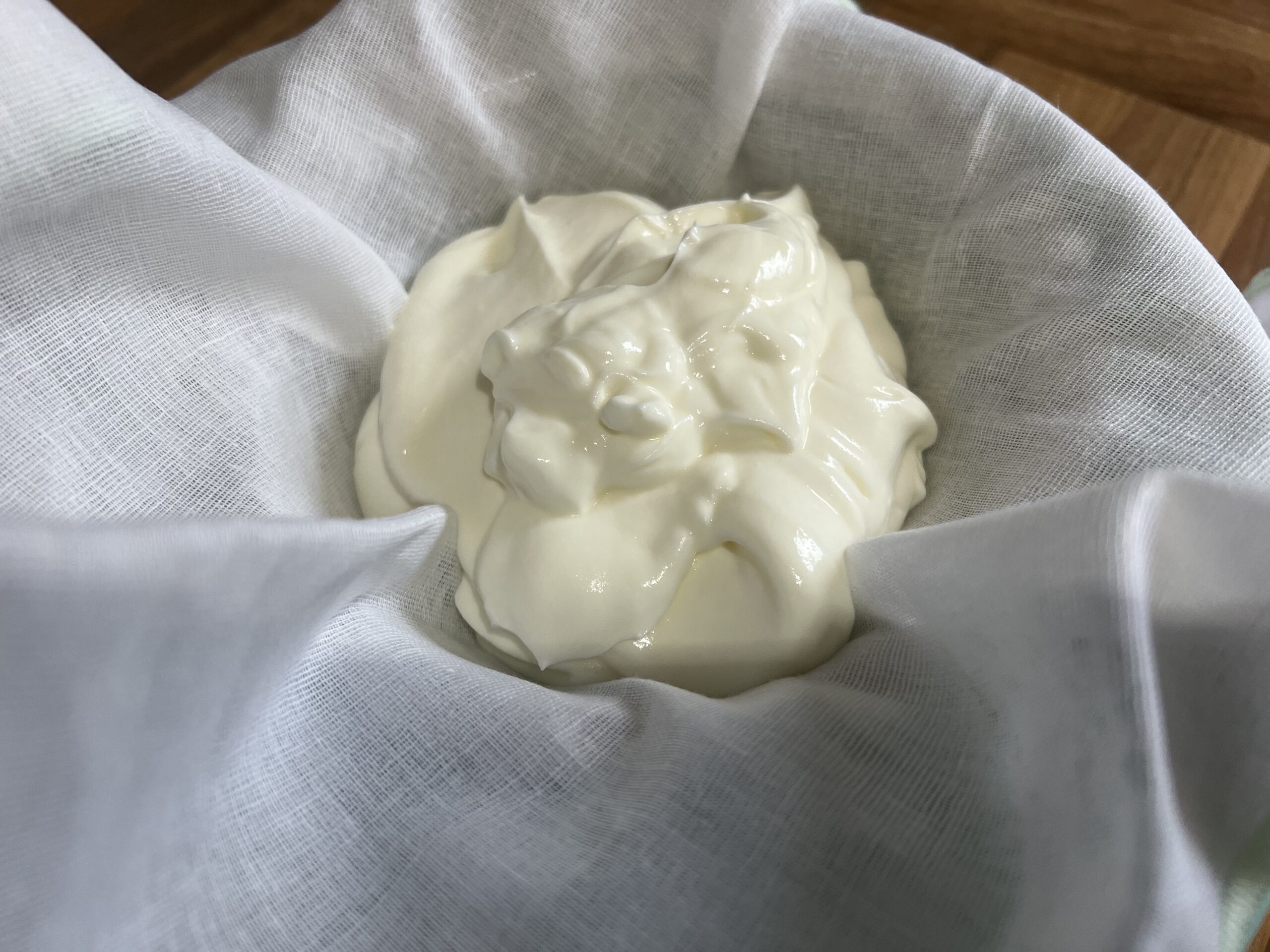

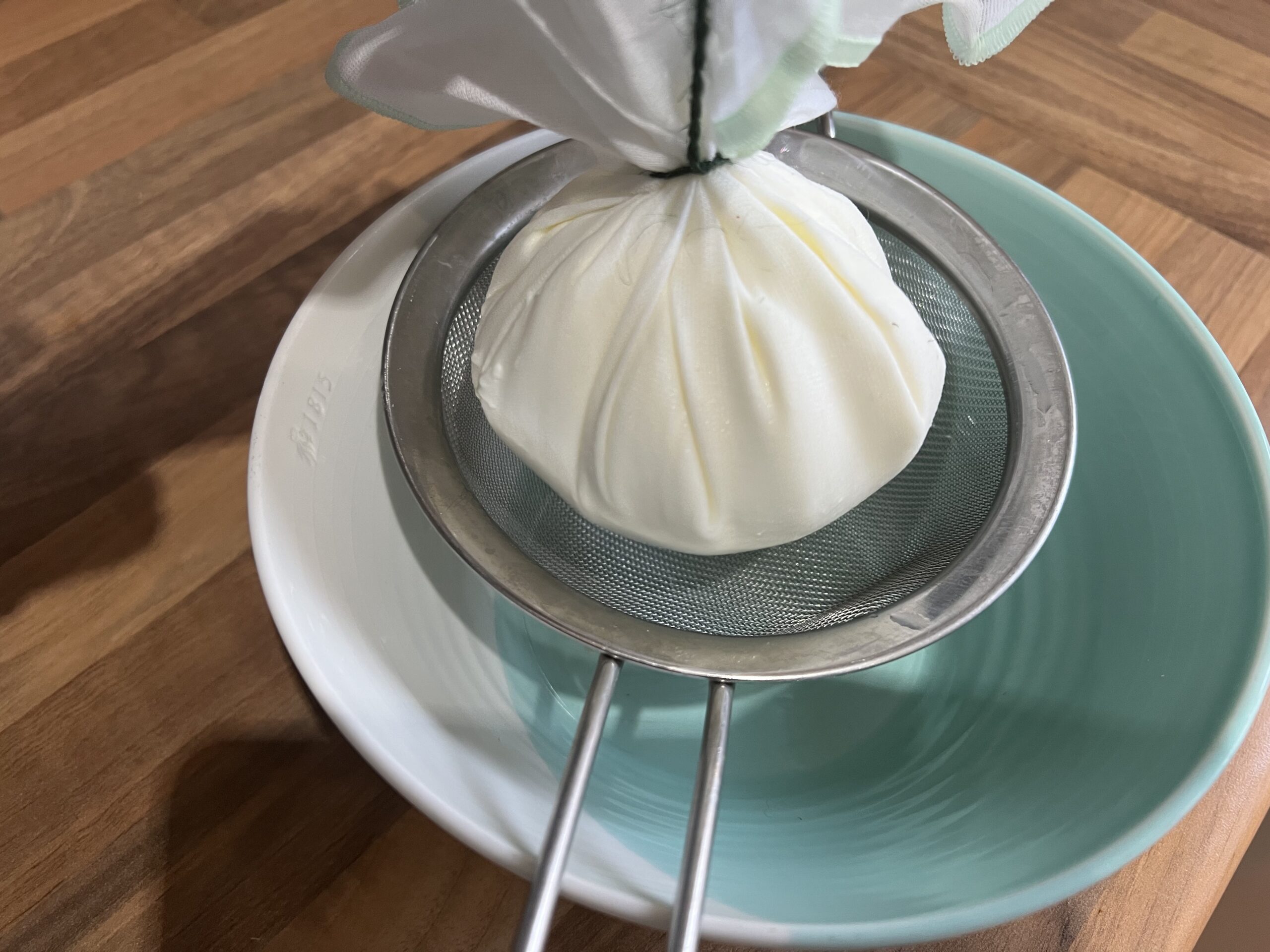
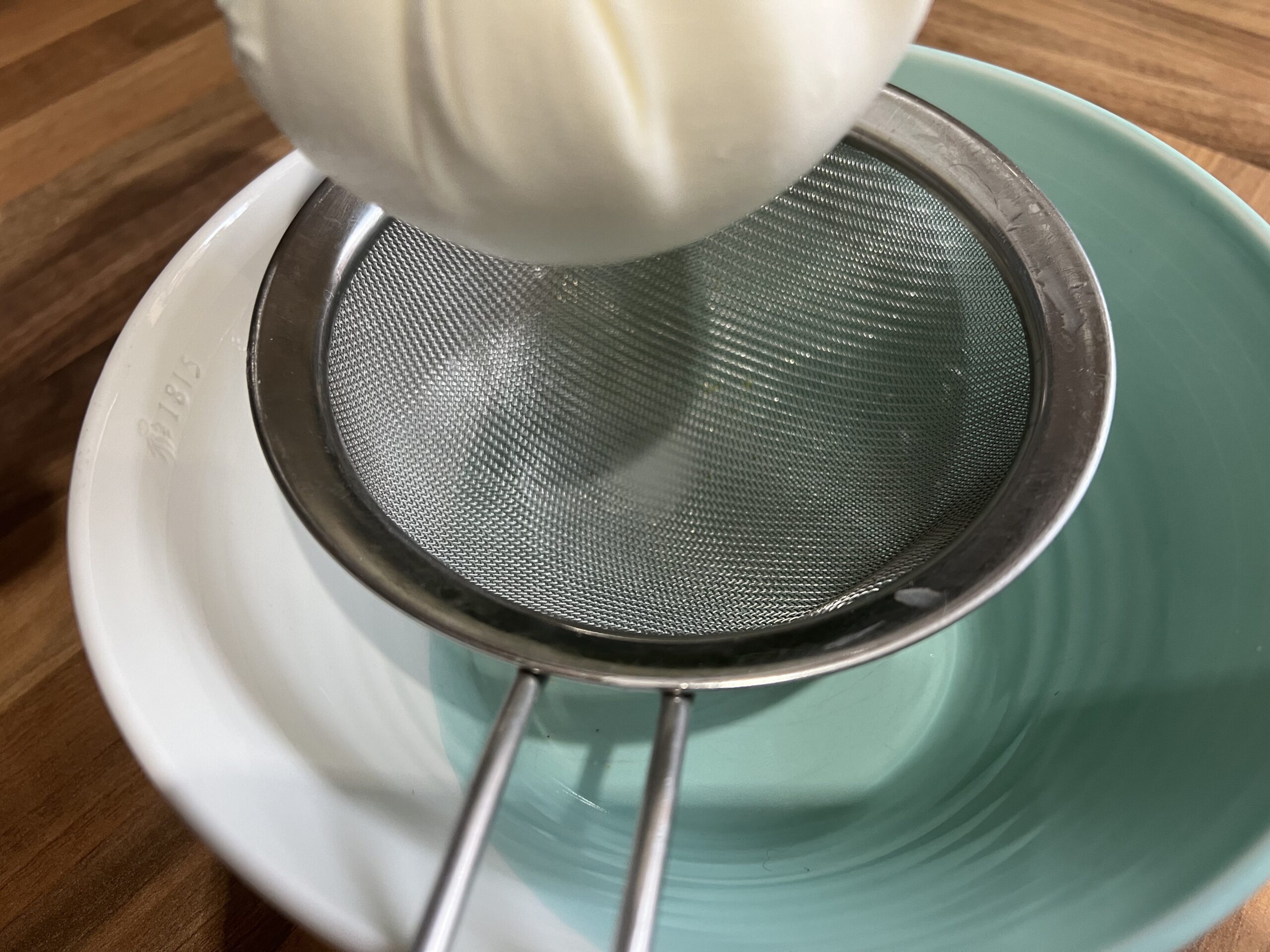
Mix together the yogurt and salt in a bowl.
Line a sieve with a piece of muslin or cheesecloth (large enough to hang over the sides) and place the sieve over a bowl. Gently transfer the salted yogurt to the muslin lined sieve and bring the ends of the muslin together. Tie the ends together using a string. The whey will begin to leak out almost immediately. (I sometimes hang it from the tap over my kitchen sink with the bowl underneath for 5-6 hours) and then transfer the bowl to the fridge for 5-6 hours. Every once in a while, I give the tied cloth a little squeeze to accelerate the draining of the whey, but this isn’t necessary. Allow the yoghurt to drain overnight, either in the fridge or over the sink. You can also place some heavy weights on the muslin to drain the whey. Let the yogurt drain for at least 12 hours and up to 24 hours.
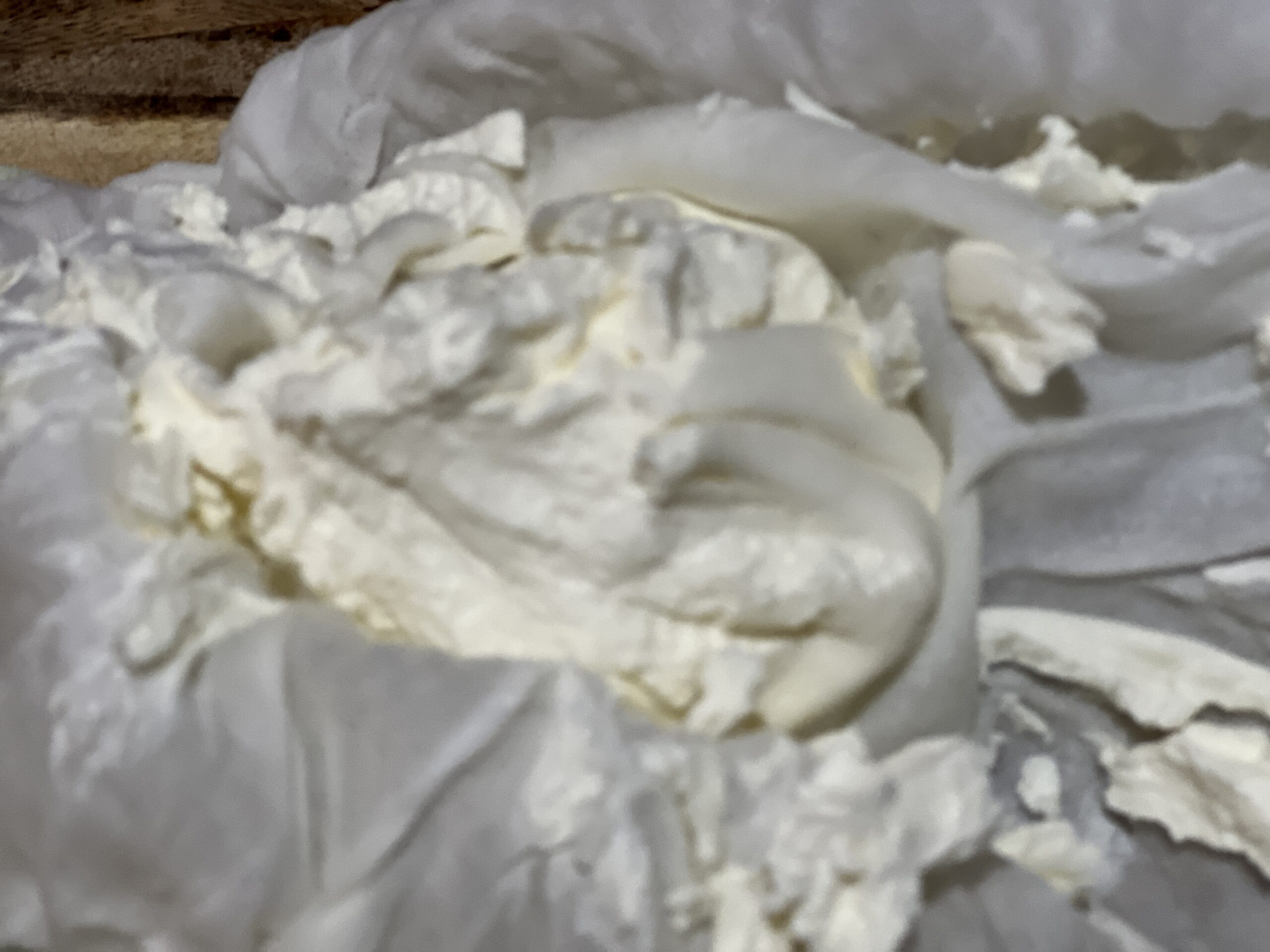
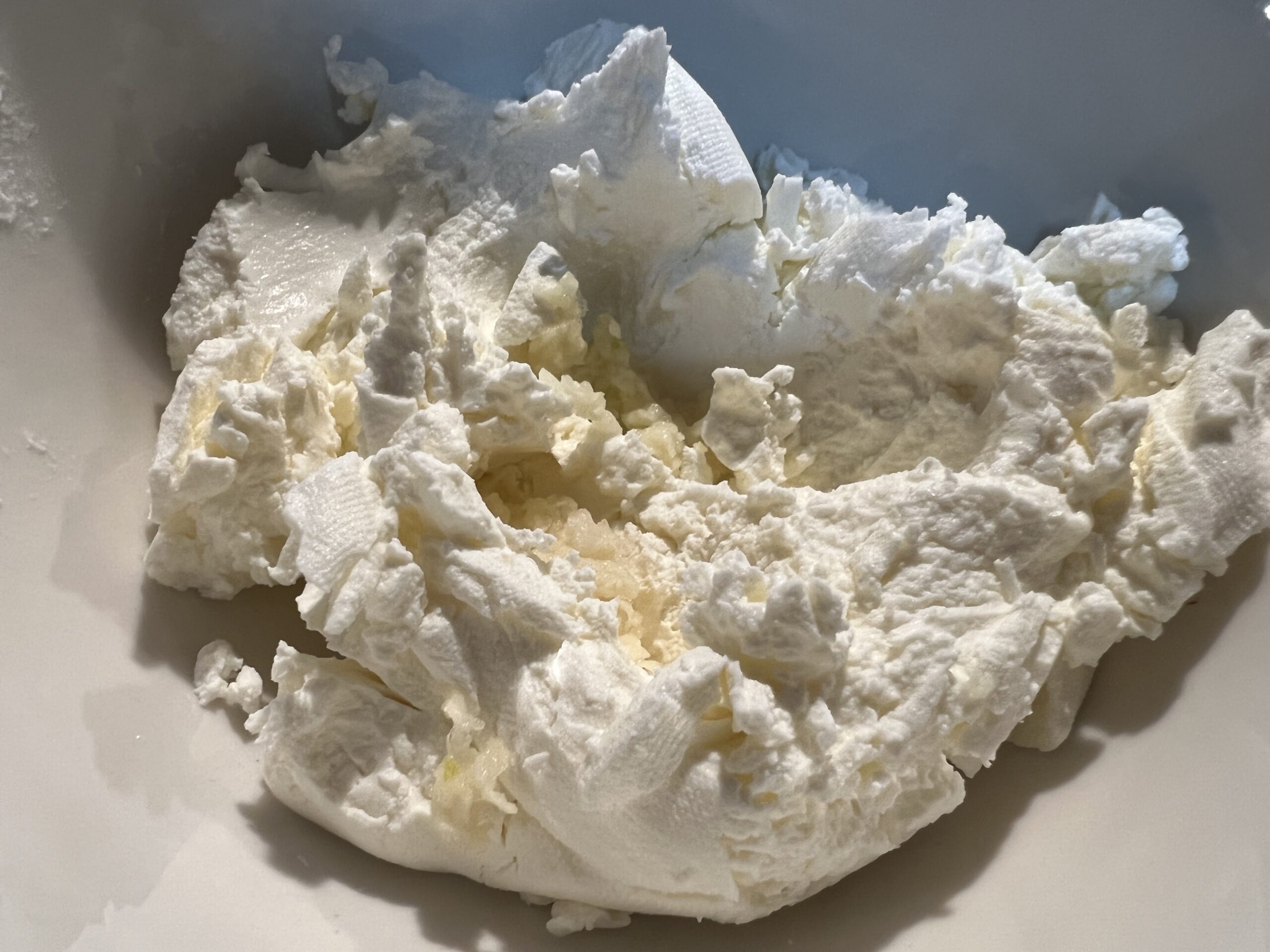
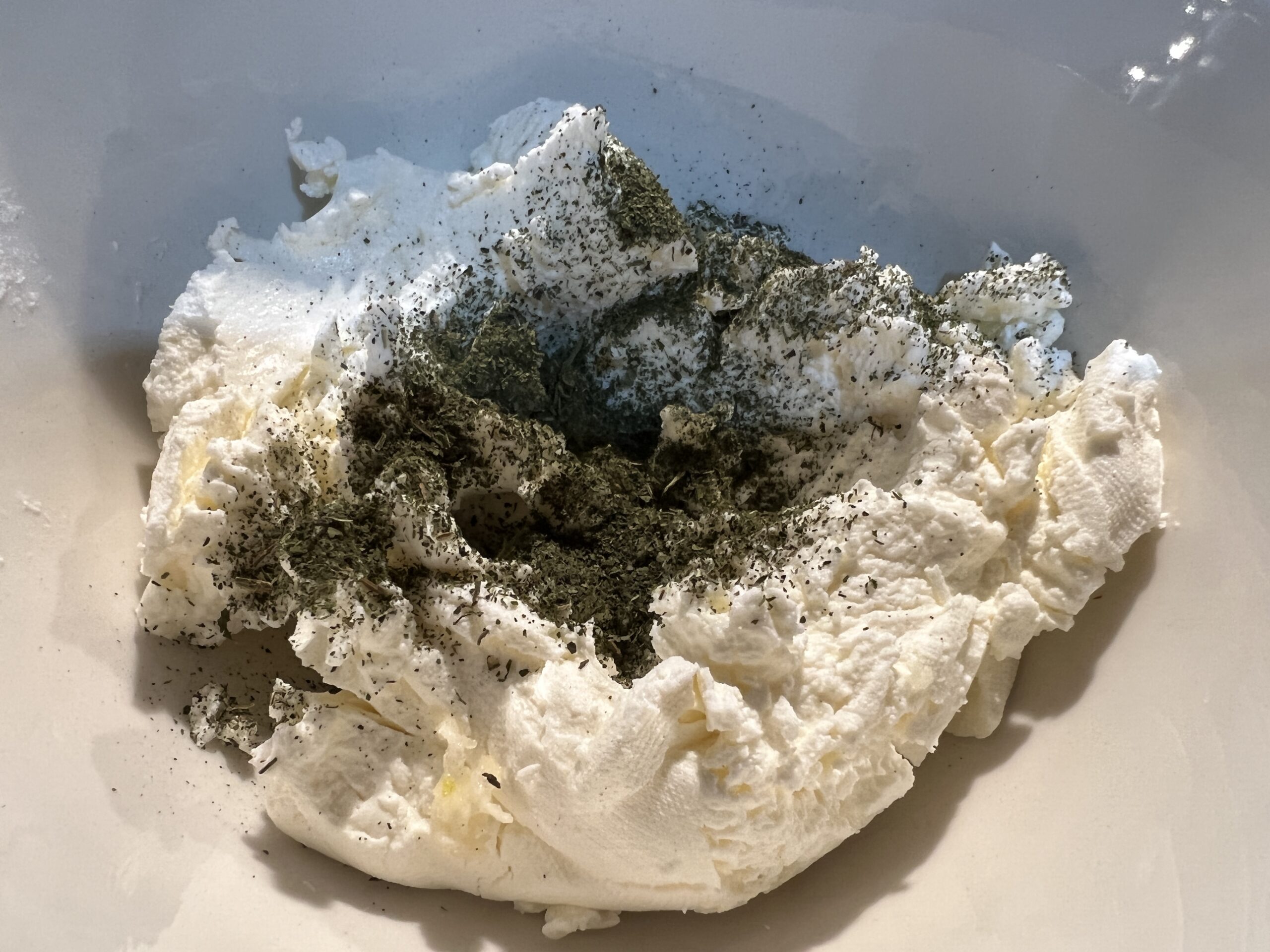
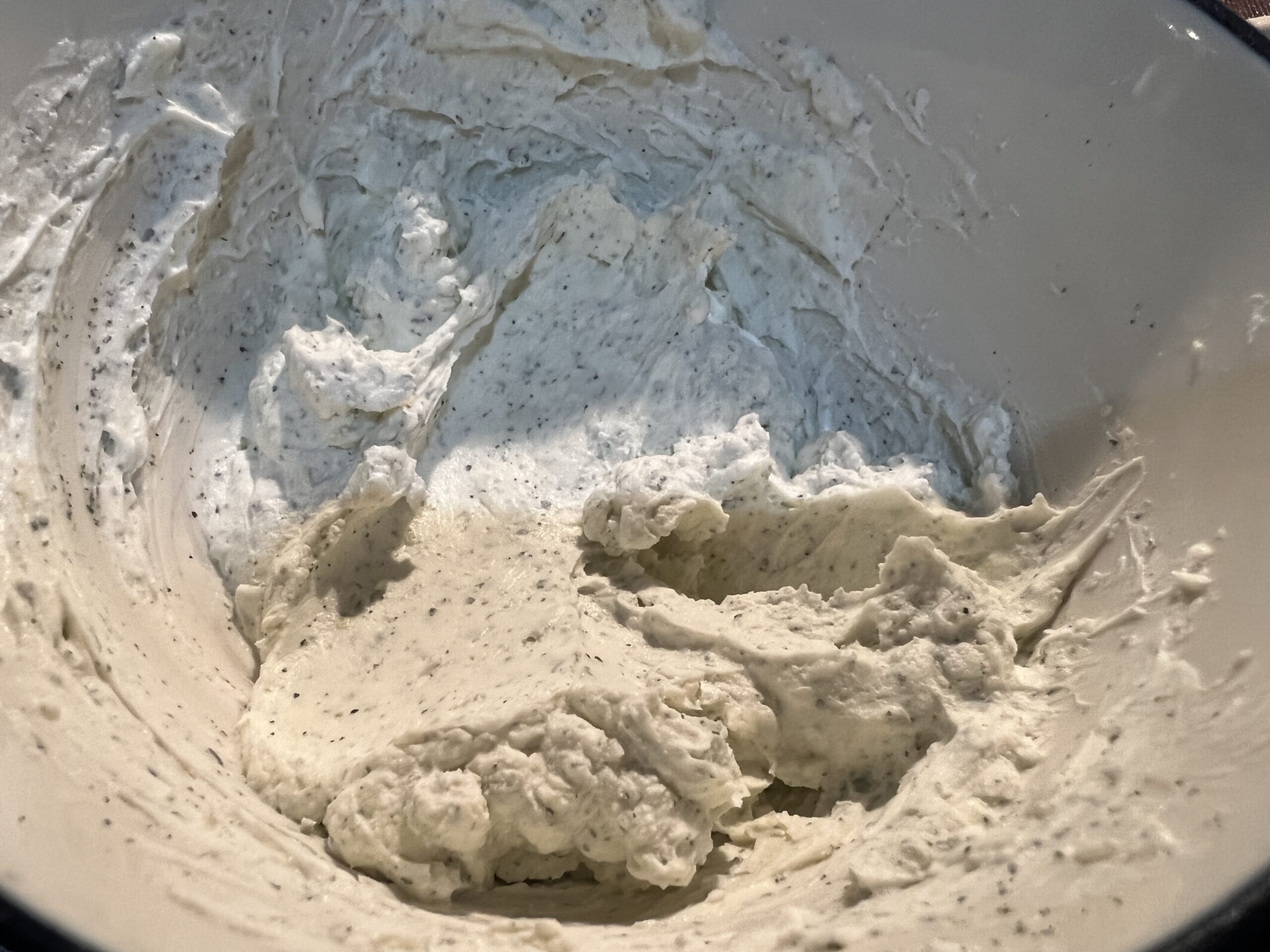
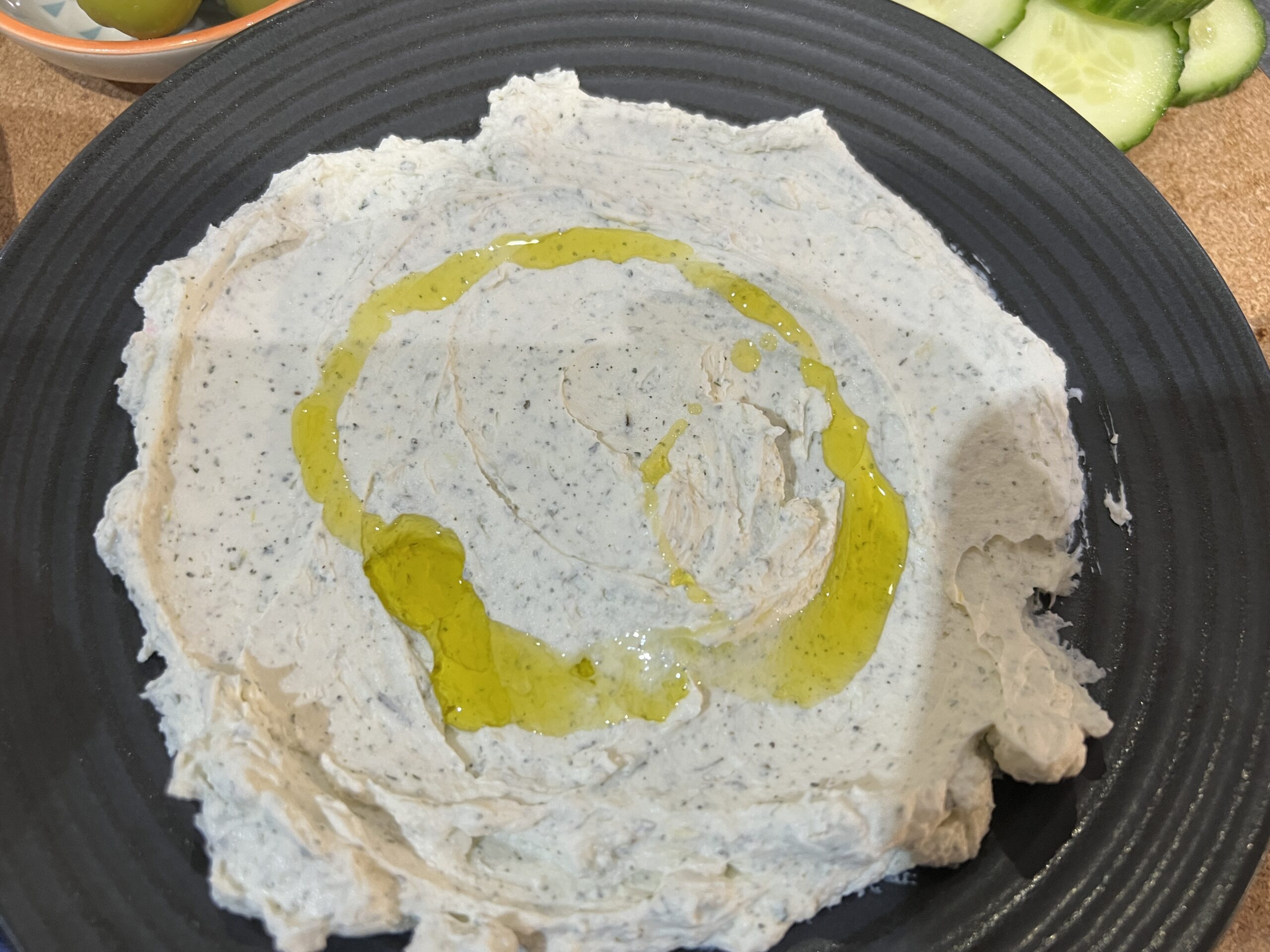
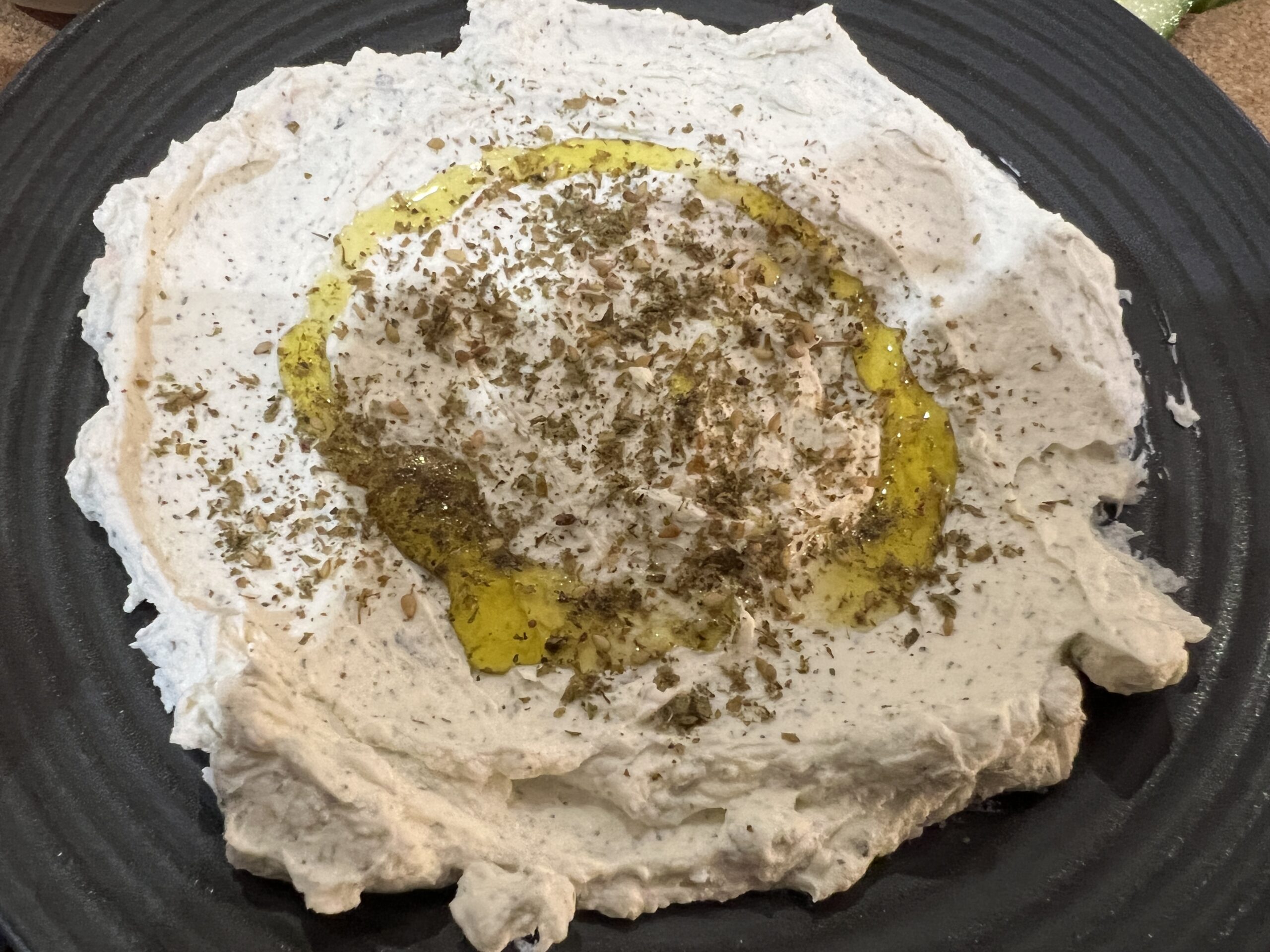
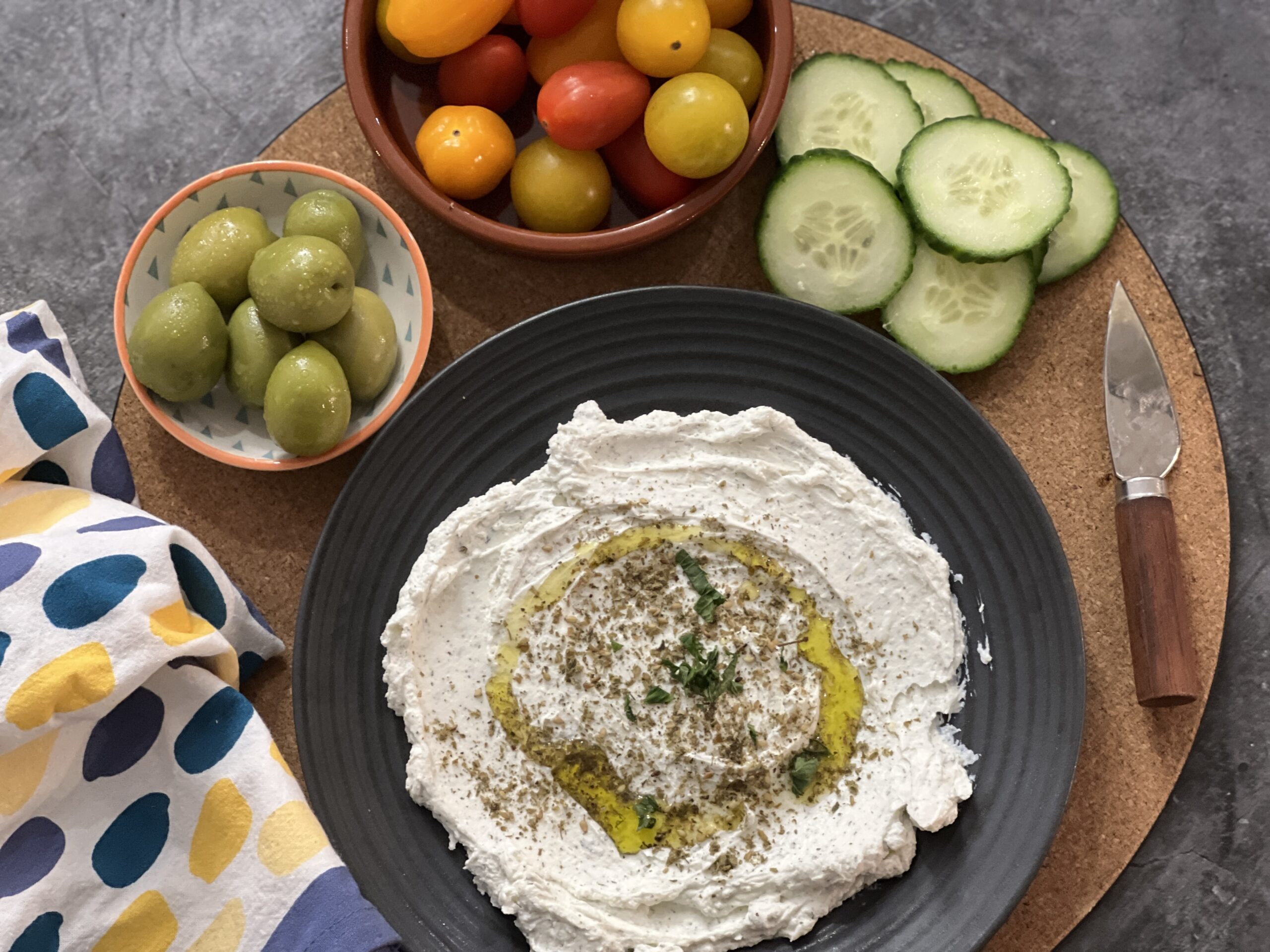
After draining for atleast 12 hours, discard the collected whey. The remaining yogurt should be smooth and creamy, like cream cheese.
Add the garlic, and dried mint and mix.
Spread it on a meze plate and drizzle some olive oil and za’atar and serve with cucumber, tomatoes, carrots, breads or part of a meze.


